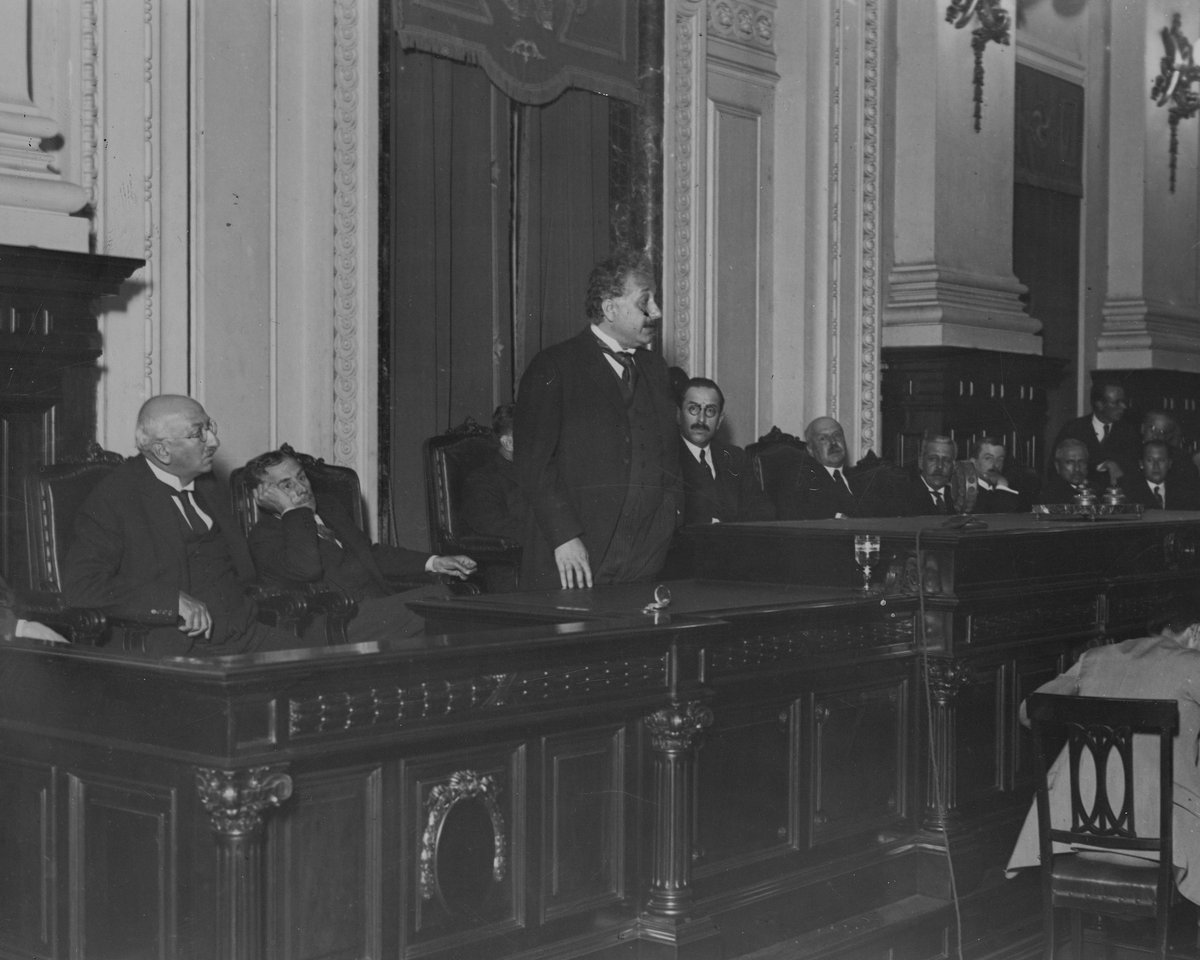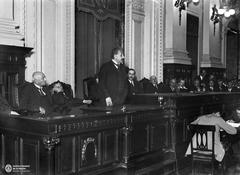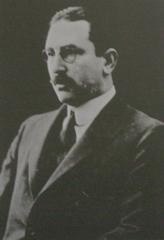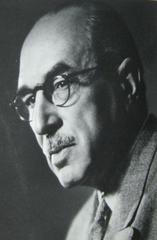
Jose Arce Monument Visiting Hours, Tickets, and Historical Significance in Buenos Aires
Date: 14/06/2025
Introduction
Buenos Aires, a city celebrated for its historical richness, diverse culture, and architectural grandeur, offers visitors an immersive journey blending its colonial past with modern vibrancy. Among its many cultural landmarks, the legacy of Dr. José Arce stands out—a distinguished physician, educator, politician, and diplomat whose contributions have left a lasting imprint on Argentina’s medical, educational, and diplomatic spheres. This guide provides a comprehensive overview of the José Arce sites, including practical details on visiting hours, ticketing, accessibility, and the broader cultural context that enhances any visit to these significant locations (Museo Julio Argentino Roca, Buenos Aires City Tourism).
Table of Contents
- Introduction
- Historical Foundations and Urban Evolution
- Cultural Significance and Local Identity
- Visitor Information
- The José Arce Sites: Location, Features, and Significance
- Visiting the José Arce Sites: Hours, Tickets, and Access
- Accessibility and Special Features
- Architectural and Photographic Highlights
- Neighborhood Context: Recoleta and Palermo
- Visitor Tips and Practical Information
- Frequently Asked Questions (FAQ)
- Conclusion
- Plan Your Visit
Historical Foundations and Urban Evolution
Early Settlement and Colonial Roots
The area encompassing José Arce is rooted in Buenos Aires’ foundational history, dating back to its establishment in the 16th century. Its development was shaped by Spanish colonial planning and a blend of indigenous and European influences, contributing to the city’s unique architectural and cultural landscape.
19th Century Transformation and Immigration
Post-independence, Buenos Aires experienced significant transformation fueled by waves of European immigration. Neighborhoods like Recoleta and Palermo, adjacent to José Arce, became characterized by elegant architecture and cosmopolitan atmospheres that continue to define their identity.
Modern Urban Identity
By the 20th century, Buenos Aires was known as the “Paris of South America,” with neighborhoods like José Arce reflecting a harmonious blend of neoclassical, art deco, and modernist styles. Today, these areas are celebrated for their lively streetscapes and enduring cultural vibrancy.
Cultural Significance and Local Identity
José Arce’s legacy is woven into the city’s multicultural fabric. The area features diverse religious centers, artistic venues, and culinary experiences. Tango culture, local festivals, and a vibrant daily life contribute to the neighborhood’s unique character.
Visitor Information
How to Visit José Arce
José Arce and its associated sites are easily accessible via Buenos Aires’ extensive public transportation system, including bus routes and the Subte (subway). The area is pedestrian-friendly, inviting visitors to explore on foot and discover nearby attractions.
Visiting Hours and Tickets
- General Neighborhood: Open to the public at all times.
- Specific Sites: Museums and cultural centers may have distinct opening hours and ticketing policies. Always check official websites for the latest information.
Guided Tours and Special Events
Guided walking tours focusing on the history, architecture, and culture of José Arce are available through local operators. Special cultural events, such as tango performances and citywide festivals, often take place in nearby parks and plazas.
Accessibility
Most public spaces and newer venues are accessible, with ramps and elevators available. Some historic buildings may have limited access; it is recommended to inquire in advance if you have specific accessibility needs.
The José Arce Sites: Location, Features, and Significance
Museo Julio Argentino Roca (José Arce’s Former House)
- Location: Vicente López 2220, Recoleta, Buenos Aires, Argentina.
- Overview: This museum, housed in José Arce’s former residence, honors both Arce and President Julio Argentino Roca. It preserves early 20th-century architecture and offers exhibits on political and cultural history.
- Access: Open during special events such as “La Noche de los Museos” or by appointment through the Buenos Aires city museum network. Admission is typically free during public events; guided tours are available by request (Museo Julio Argentino Roca).
María Antonieta Arce Library (Faculty of Medicine, UBA)
- Location: Avenida Córdoba 2351, Buenos Aires.
- Overview: Established in memory of Arce’s daughter, this library houses his donated medical collection. It serves as an important academic resource and a tranquil study space within the UBA Faculty of Medicine.
- Visiting Hours: Open Monday to Friday, 9:00 AM – 6:00 PM. Access for general visitors requires prior arrangement (Buenos Aires City Tourism).
Visiting the José Arce Sites: Hours, Tickets, and Access
Museo Julio Argentino Roca
- Hours: Open during cultural events or by appointment.
- Tickets: Admission free during public events; contact the museum for private visits.
- Guided Tours: Available upon request in Spanish and sometimes English.
María Antonieta Arce Library
- Hours: Monday to Friday, 9:00 AM – 6:00 PM.
- Tickets: No fee; prior arrangement required.
- Accessibility: Equipped with ramps and elevators.
Accessibility and Special Features
Both key sites are committed to accessibility. The Museo Julio Argentino Roca provides wheelchair access and adapted restrooms, while the María Antonieta Arce Library offers elevators and accessible reading spaces. Contact venues in advance for specific needs.
Architectural and Photographic Highlights
- Museo Julio Argentino Roca: Features preserved period architecture, original furnishings, and personal artifacts from Arce and Roca.
- María Antonieta Arce Library: Showcases classic reading rooms and rare medical texts, offering a serene atmosphere for research and photography.
Neighborhood Context: Recoleta and Palermo
Situated near Recoleta and Palermo, the José Arce sites benefit from proximity to major attractions such as the Recoleta Cemetery, Floralis Genérica, MALBA, and the Japanese Garden. Both neighborhoods are known for their green spaces, museums, dining, and nightlife, making them ideal bases for cultural exploration.
Visitor Tips and Practical Information
- Check Official Sources: Always consult the official websites of museums and the UBA for current schedules and ticketing.
- Language: Spanish is predominant, but English guides are often available.
- Safety: Buenos Aires is generally safe; basic precautions are advised.
- Public Transport: Subte, buses, taxis, and ride-sharing services provide easy access.
- Event Planning: Align your visit with cultural events for a more engaging experience.
Frequently Asked Questions (FAQ)
Q: What are the visiting hours for Museo Julio Argentino Roca?
A: Open mainly during special events; private visits can be arranged by appointment.
Q: Is there an entrance fee for the José Arce sites?
A: Generally free during public events; some tours or exhibitions may have a small fee.
Q: Are guided tours offered?
A: Yes, in Spanish and sometimes English, by prior arrangement.
Q: Are the sites accessible for visitors with disabilities?
A: Yes, both sites have accessible facilities, but advance notice is recommended.
Q: Where is the María Antonieta Arce Library located?
A: Within the Faculty of Medicine, Avenida Córdoba 2351, Buenos Aires.
Summary and Final Recommendations
Exploring José Arce in Buenos Aires offers a unique window into Argentina’s historical, cultural, and urban evolution. From the elegant Museo Julio Argentino Roca to the scholarly María Antonieta Arce Library, visitors gain insight into the legacy of a figure who helped shape national medicine, education, and diplomacy. The surrounding Recoleta and Palermo neighborhoods enrich the experience with lush parks, renowned museums, and vibrant local life. For the best visit, check official sources for up-to-date information, consider joining a guided tour, and immerse yourself in the city’s authentic porteño spirit (Museo Julio Argentino Roca, Buenos Aires City Tourism, whichmuseum.com).
Plan Your Visit
For the latest details on hours, tickets, and events, consult:
Download the Audiala app for personalized travel guides, audio tours, and local insights. For updates on events and more travel inspiration, follow us on social media.
References
- Visiting the Museo Julio Argentino Roca: History, Hours, Tickets, and Tips, 2025, University of Buenos Aires (https://www.uba.ar)
- Visiting the José Arce Sites in Buenos Aires: Hours, Tickets, and Historical Insights, 2025, Buenos Aires City Museum Network and University of Buenos Aires (https://turismo.buenosaires.gob.ar/en)
- Visiting José Arce Avenue: Hours, Attractions, and Tips for Exploring Buenos Aires Historical Sites, 2025, Buenos Aires City Tourism (https://turismo.buenosaires.gob.ar/en)
- Buenos Aires Museums and Attractions Overview, 2025, WhichMuseum (https://whichmuseum.com/place/buenos-aires-9133/best-museums)
- Travel Safety and Tips for Buenos Aires, 2025, Map and Camera, TravelSafe Abroad, Secrets of Buenos Aires (https://mapandcamera.com/is-buenos-aires-safe/), (https://www.travelsafe-abroad.com/argentina/buenos-aires/), (https://secretsofbuenosaires.com/is-buenos-aires-safe/)
- Buenos Aires City Tourism Official Site, 2025 (https://turismo.buenosaires.gob.ar/en)
- Audiala App for Travel Guides, 2025 (https://www.audiala.com)

































































































































































